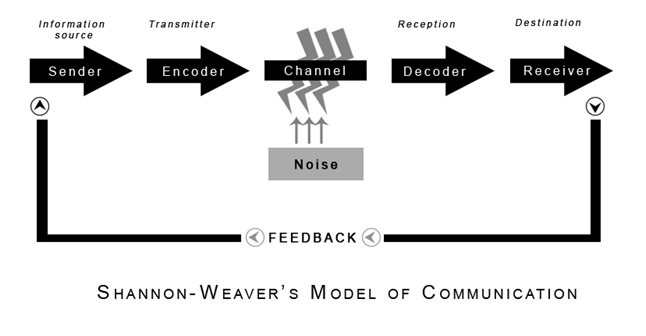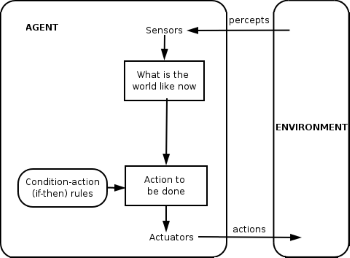What is Information?09th of Juli 2016Written by Robert K. Logan as a media ecologist in 2014, this work dives into the nature of information, and how it shapes the world we live in. As the second title "Propagating Organization in the Biosphere, Symbolosphere, Technosphere and Econosphere" suggests, the book takes place on the four stages specified there. It was published under a creative commons license, and can be read online here. Little tidbit of information: The word “information” actually comes from the addition of the appendix “-ation” to the verb to inform, rendering it into a noun, with the literal meaning “the act of informing”, and the verb “to inform” means “giving a form to the mind” or teaching someone. The first chapter dives into what will be the topics for the book, and how the concept of information will be tackled. The follow-up questions raised from the three-word title are listed in the book, but since the author tackles the concept of information in a much broader context than just what it means for information technologies, I will only list those relevant to my field of expertise:
|
 |
The chapter continues with an overview of the seminal works that have heavily influenced the positions in this book. They are handled in depth over the following chapters. The book "Propagating Organization: An Enquiry" by among others Stuart Kauffman, which details the differences between biotic and instructional information from Shannon-information. The second work is the collected works of the author leading to this book. This includes “The Alphabet Effect”, looking at the impact of an alphabet on the development of Western civilization, “The Extended Mind”, an attempt to understand the origin of human communications and language, and “The Sixth Language”, mapping its evolution into the digital age. The last of the influential works is the author’s collaborations in paper and other media with John Schumann, delving into the importance of the symbolosphere.
Chapter 2 focuses on the mathematical nature of Claude Shannon’s definition of information, and the lack of context in this definition. Shannon's definition quantifies information mainly based on the intelligence of the message and the speed at which it is transmitted. His formulation tried to solve the problem of how to best encode information that a sender wished to transmit to a receiver, and is commonly known as the basis for digital communications. Shannon also demonstrated that mathematics could be used to calculate the theoretical maximum amount of information carried by a communications system based upon the physical laws of thermodynamics.

The numerical value assigned to the information (or its intelligence) is what Shannon would coin as the information entropy. Later on, the sign of this numerical value would be inversed, as information would be categorized as negative entropy, because it expresses a purpose.
Where Shannon was backed by Warren Weaver in stating that information has nothing to do with meaning, but is a description of a pattern, Donald Mackay would contradict this view in 1951. Unfortunately, since meaning could not be quantified, Mackay’s theory never was able to dethrone the Shannon-Weaver model. However Mackay never stopped arguing that there is indeed a qualitative dimension to information that the quantitative model approach of Shannon did not capture, nor by the later model of Kolmogorov. Information is multidimensional.
The main point to these theories is that information is structured data and knowledge is the ability to leverage this information in a strategic fashion as to achieve one’s goals and objectives.
The third chapter focuses on the symbiosis between language and communication. Logan indicates that language is both a medium for communication and an informatics tool. In addition he attributes the emergence of language was preceded by the adaptations in the human situation in response to the skills acquired for tool making, social interaction and mimetic communication. In contrast with Noam Chomsky’s concept of a Universal Grammar, he defines language as a purely human and non-instinctive method of communicating ideas, emotions, and desires as well as a system of voluntarily produced symbols for formulating, processing, storing, retrieving, and organizing information. With the latter part, we step into the domain of information architecture, or what Logan calls the Sixth Language.
The sixth language is merely a logical follow-up of the previous languages. Each evolution from the first till the sixth language is indicated by the derivation of the next step from the previous step each time increasing the abstraction and adding the capability to represent increasingly more complex phenomena through a richer vocabulary and more complex structures. These evolutions go from speech to the written word to mathematics to science to computing to the Internet. This is the embodiment of the quote by Ludwig Wittgenstein: “Every particular notation stresses some particular point of view”.
Where language was the main focus in chapter 3, chapter 4 takes this to the organizational form in which language is used, namely a culture (which consists of symbolic information acting as an adaptive mental tool). Most of the reasoning in this chapter is focused on this, and has little relevance to the discipline of EIM. Even if one were to consider corporate culture, no significant correlations can be put forth.
Chapter 5 takes the extrapolation one step further into the symbolosphere, which is defined as the human mind and all the products of this mind, including symbolic abstract thought, language and culture. It draws an analogy between living organisms and linguistic organisms that could easily be transposed to information organisms (or canonical data models and big data repositories):
- They propagate their organization.
- They evolve through descent, modification and selection (in a process closely resembling natural selection, hypotheses and information fit to survive does survive).
- They are emergent phenomena.
- They arise from self-organization and catalytic closure (information is only useful in correlation with other information, never on its own).
- They have a form of instructional information or constraints.
The neo-duality picture is the main subject of study in chapter 6. This refers to the view of the dualists as described in Philip Clayton’s 2004 book “Mind and Emergence : From Quantum to Consciousness: From Quantum to Consciousness”. They are one of the three basic schools of thought surrounding the relationship between higher orders of organization and the components out of which they are constructed and from which they emerge. The other two schools are labeled as physicalists and emergentists. The former believing all can and will be explained by basic physics, the latter believing all things are constructed of physical particles (res extensa or physiosphere), but their aggregation into more complex structures add novel properties (res cogitans or symbolosphere), much like the progression through the six languages of chapter 3. The dualists believe another element (or spiritual factor) in addition to the physical world.
Culture is an example of complex structures giving birth to new properties. It is an important adaptive mental tool where we pass knowledge down to future generations through communication and social interaction. An anthropological view would state that culture is a system of symbolically encoded conceptual phenomena that are socially and historically transmitted within and between populations. Technology (more relevant to my line of work) is an element of such a culture. It is conceptual and symbolic and shows how materials can be organized through downward causality to achieve functionality. We (technologically minded individuals) combine seemingly unrelated items in order to make them function together to achieve a goal not related to any of the used materials.
Drawing further upon the principle of neo-duality, the spheres get more fleshed out in respects to their importance in human existence. Chapter seven delves into the comparison of these spheres (biosphere, symbolosphere, technosphere and econosphere) based on five properties in relationship to their constituents:
- The nature of the information they contain
- The way in which they evolve
- The nature of their agency (ability to act autonomously on their own behalf)
- Their openness to matter, energy and information
- The symbiotic relationships they enter into
An agent in this chapter is described and likened to Kauffman’s definition as a autocatalytic system carrying out at least one thermodynamic work cycle, and added to this definition by the author, is the condition that it should be able to process information derived from its environment. As such, this definition comes very close to describing the agents of the Multi-Agent System (MAS). Especially, when you consider the learning agents of the MAS, the analogy of the biosphere with the technosphere becomes evident. The evolutionary aspect also surfaces in the technosphere when we consider disruptive forces (see Gartner’s Nexus of Forces). Some more thoughts on the relation between systems such as MAS and Event Driven Architectures can be found here.

Chapter eight puts into focus the nature of science where information will act as a bridge between the positive and the social sciences, as well as link this to the humanities. The distinction with mathematics comes from the starting point for both. Where mathematics leans on axioms and the establishing of proof of theorems through logic, science establishes veracity of a proposition through the scientific method (observation, generalization, hypothesis formulation, and empirical verification). A popular misconception is that science could actually prove anything about nature. The reality of science is rather that a hypothesis can be tested and shown to be valid for the conditions under which it was tested. It is also worth noting that the greater the predictability of a scientific model: the less complex it is, and the smaller the number of elements that can be successfully modeled. This could easily be transposed to designs of a software nature. It is both the strength and the limitation of science as a language with the dual role of communication (description) and information processing (predictability).
The chapter of the history of the written word in the form of a book has a bit of a sidestep from the rest of the chapters. It does spell out the Laws of the Media by Marshall McLuhan to which the introduction of a new medium should adhere:
- Enhancement: Every medium should enhance some human function.
- Obsolescence: In doing so, it renders obsolete a former technology or medium.
- Retrieval: In achieving its function, the new medium retrieves some older form from the past.
- Reversal: When pushed far enough, the new medium flips or reverses into a complementary form
The final chapter dives into the non-verbal forms of information and communication associated with the artistic expression through any form (music, painting…). According to some scholars, the introduction of art was a singularity or a “great leap forward”. Roughly 50000 years ago it wasn’t there, and suddenly all human communities embraced this new form of communication. Both verbal and artistic expression tend to the same goal of communicating the intentions of the speaker or writer or artist, and thus are only valuable of the receiving party has the same rough knowledge, so it can be understood.
| Review | EIM | EDA |